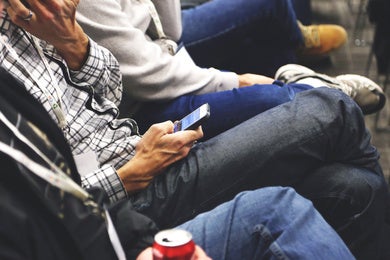
Don’t let base of the pyramid millennials catch your company off guard
Hardly a day passes without a new article on how businesses are analyzing the needs, wants and spending trends of millennials. In the US alone, millennials (or Generation Y), those born between 1980 and 2000, represent 30 percent of the population. By 2025 they will be 75 percent of the workforce of this country. The impact that millennials are starting to have on the global economy, the environment, and politics is enormous. But “millennial mania” is dominated by studies, research and marketing efforts that focus on affluent individuals. Meanwhile, in Latin America and the Caribbean a market of 77 million low-income or base of the pyramid millennials goes almost unnoticed.

WANTED: Innovative companies for a $760 billion market
It has been more than ten years since we first read about the base of the pyramid (BOP) and the large and virtually untapped market represented by this socio-economic segment. People at the BOP in Latin America and the Caribbean live on less than $10 a day, but they have benefited from the region’s economic growth between 2000 and 2010 and their incomes have been growing ever since. Latin America’s BOP now encompasses 406 million people and represents a market of $760 billion. A market segment that awaits for innovative companies.

Changes at the base of the pyramid will transform markets in Latin America and the Caribbean
By Lourdes Gallardo, Senior Specialist, Opportunities for the Majority at the Inter-American Development Bank From 2000 to 2010, Latin America and the Caribbean (LAC) enjoyed a remarkable wave of sustained economic growth which helped improve the incomes and welfare of millions of people living at the base of the pyramid (BoP). According to the World Bank, nearly 70 million people increased their purchasing power significantly and 50 million Latin Americans escaped poverty over the decade. This sea change dramatically altered their aspirations, priorities, and interactions with their societies.

Something New in BOP Housing
By Christy Stickney, author of Many Paths to a Home: Emerging Business Models for Latin America and the Caribbean’s Base of the Pyramid; and Lina Salazar Ortegón, Opportunities for the Majority at the IDB I’m intrigued by FOMEPADE, a rising star in Mexico’s financial scene. Conceived by microfinance veteran Juan José Gutiérrez Chapa (a founding partner of Banco Compartamos) to provide quality housing to underserved markets, FOMEPADE launched in 2012 a housing loan program that incorporates housing providers into a unique value chain for the families at the base of the pyramid (BOP). FOMEPADE’s promising ventures in affordable housing for the BOP offer evidence that new players and business models are emerging, forging inroads into BOP housing markets in Latin America and the Caribbean (LAC).

Technology to access an unexplored market in Peru
Good news for companies and financial institutions interested in tapping into new markets: Peruvians who live at the base of the pyramid (BoP) spent 160 percent more on information and communications technologies (ICT) in 2013 than in 2000 –from US$20 per capita per year to US$52. Currently, four out of ten BoP heads of households use the internet. More than half of them are between 18 and 35 years old. Additionally, 95 percent of the country’s BoP heads of household own a cellphone, and predominantly the younger ones use it to access the internet.

Financial inclusion just a click away: E-wallets and payment platforms
By Valentina Echeverry, Opportunities for the Majority; and Sergio Navajas, MIF. In Latin America, 60 percent of the population lacks access to financial services, equivalent to approximately 250 million people. However, mobile phone penetration is between 90 and 100 percent. In some countries, such as Colombia, penetration is 105 percent. This indicates that most people have a mobile device and some, even two. What role do mobile wallets and payment platforms play in financial inclusion?